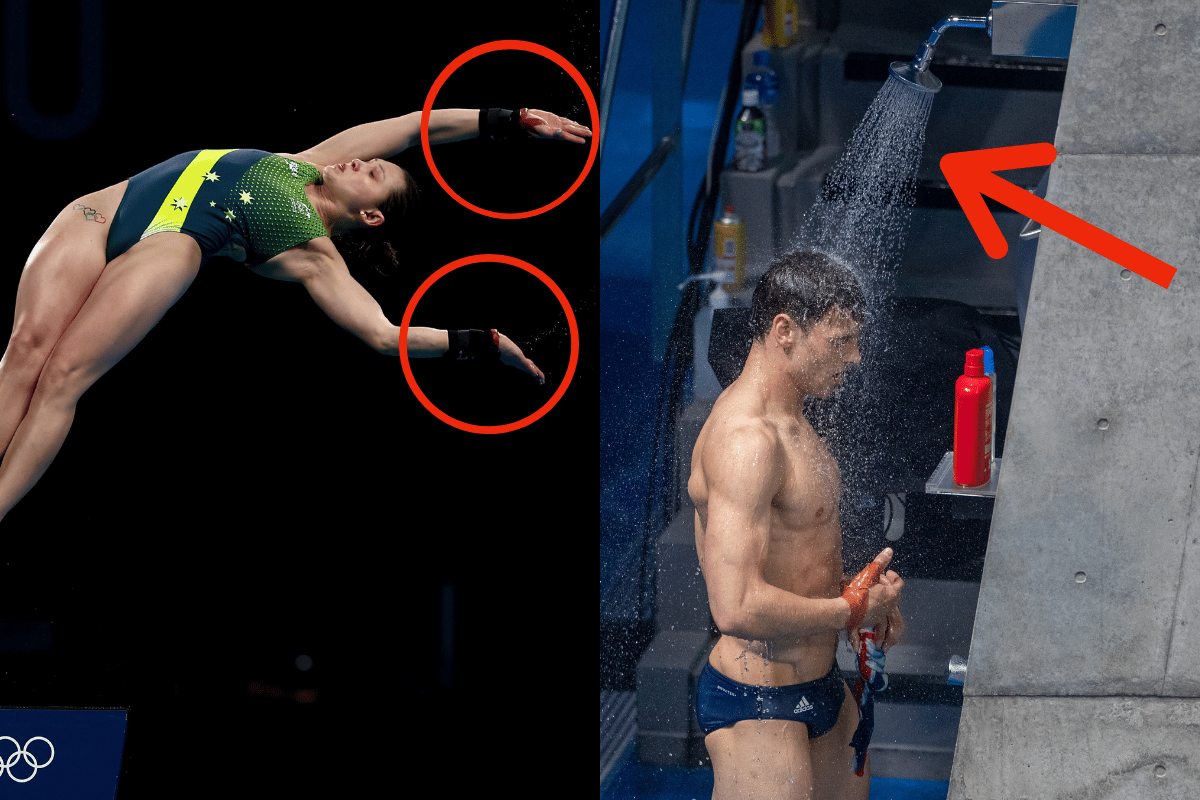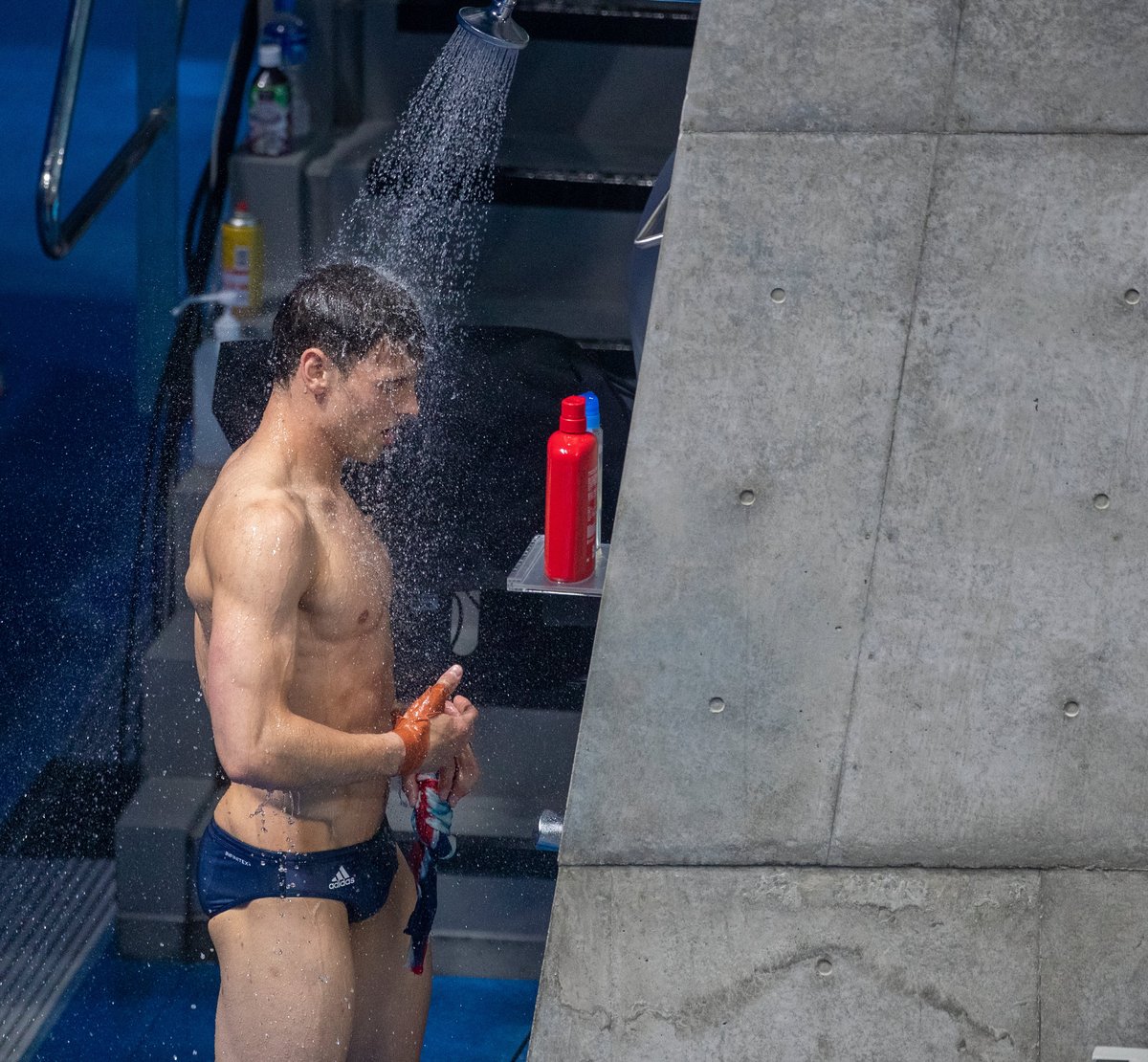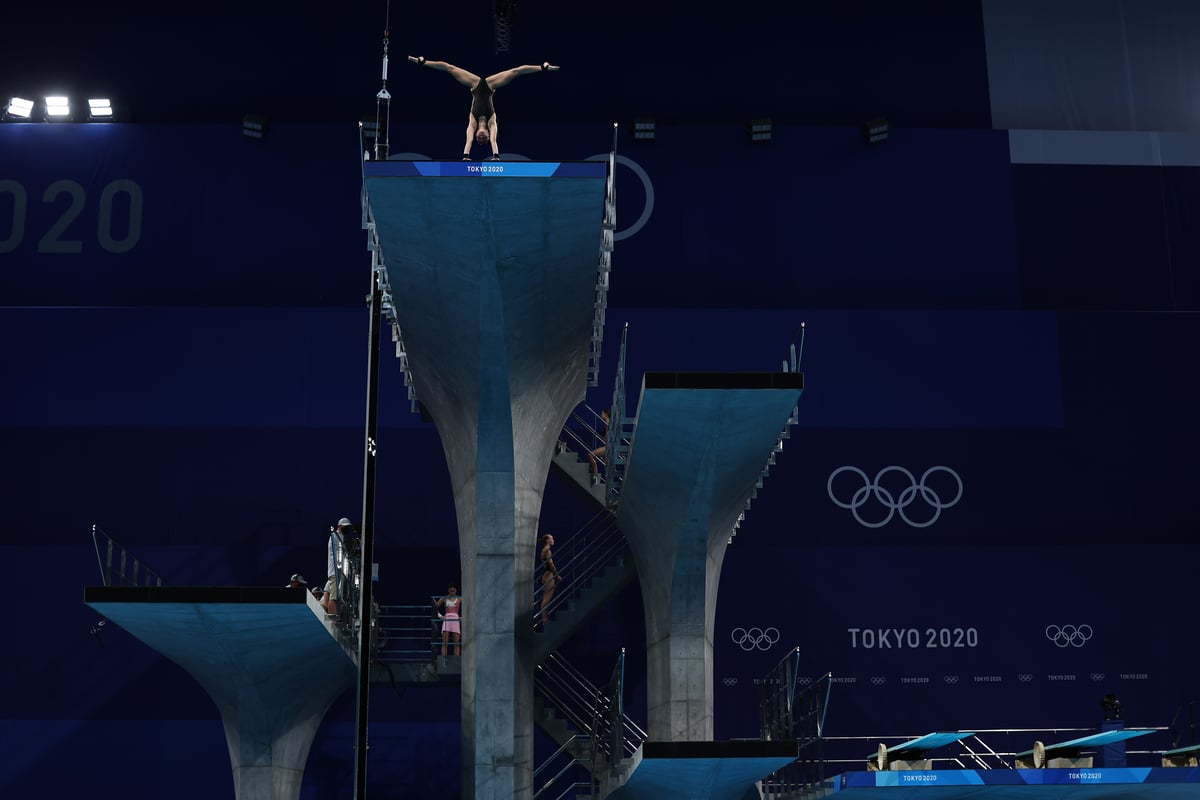
Australia just snatched up our first medal for diving at the Tokyo Olympics. And it's all thanks to Melissa Wu.
The 29-year-old kicked things off by winning a bronze medal in the women's 10m platform final earlier today.
But as we tune in to watch the diving, we've started to ask ourselves some questions.
Like why do drivers have tape on their body? And what's the go with the ridiculously tiny towels?
So we decided to investigate (by that we mean trawling the internet and watching TikTok videos for 'research').
Listen to this episode of Mamamia Out Loud, where Holly, Mia and Jessie recap of some of the weirder side of the Olympic games. Post continues below.
Here are eight things you've probably always wondered when watching the diving at the Olympics.
Let's dive in (excuse the pun).
1. Why do divers have strapped wrists?
By now, you may have noticed divers wearing tape around their wrists or other parts of their bodies. And it's actually for a very good reason.
In a recent TikTok video, Melissa Wu explained that athletes hit the water so fast they need to wrap tape around their wrists to prevent injury from the impact.
And by fast, we mean they're hitting the water at 60 kilometres per hour from the 10 metre platform.
Wu said the most common diving injuries are to the neck, wrists, knees and back which are usually caused from diving into the water during training.
"Sometimes we do over 50 dives per session."



Top Comments